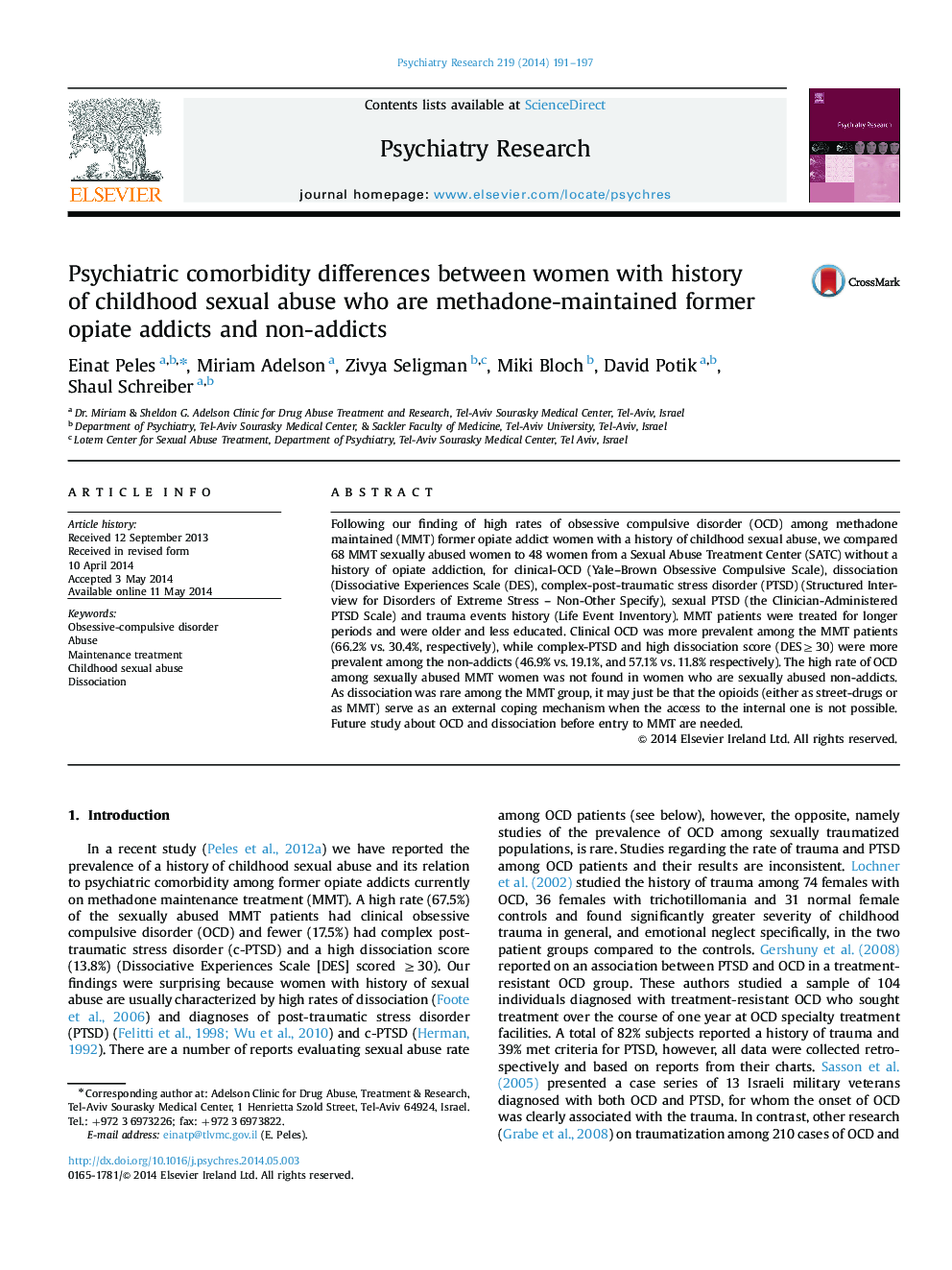| کد مقاله | کد نشریه | سال انتشار | مقاله انگلیسی | نسخه تمام متن |
|---|---|---|---|---|
| 332952 | 545881 | 2014 | 7 صفحه PDF | دانلود رایگان |
Following our finding of high rates of obsessive compulsive disorder (OCD) among methadone maintained (MMT) former opiate addict women with a history of childhood sexual abuse, we compared 68 MMT sexually abused women to 48 women from a Sexual Abuse Treatment Center (SATC) without a history of opiate addiction, for clinical-OCD (Yale–Brown Obsessive Compulsive Scale), dissociation (Dissociative Experiences Scale (DES), complex-post-traumatic stress disorder (PTSD) (Structured Interview for Disorders of Extreme Stress – Non-Other Specify), sexual PTSD (the Clinician-Administered PTSD Scale) and trauma events history (Life Event Inventory). MMT patients were treated for longer periods and were older and less educated. Clinical OCD was more prevalent among the MMT patients (66.2% vs. 30.4%, respectively), while complex-PTSD and high dissociation score (DES≥30) were more prevalent among the non-addicts (46.9% vs. 19.1%, and 57.1% vs. 11.8% respectively). The high rate of OCD among sexually abused MMT women was not found in women who are sexually abused non-addicts. As dissociation was rare among the MMT group, it may just be that the opioids (either as street-drugs or as MMT) serve as an external coping mechanism when the access to the internal one is not possible. Future study about OCD and dissociation before entry to MMT are needed.
Journal: Psychiatry Research - Volume 219, Issue 1, 30 September 2014, Pages 191–197
